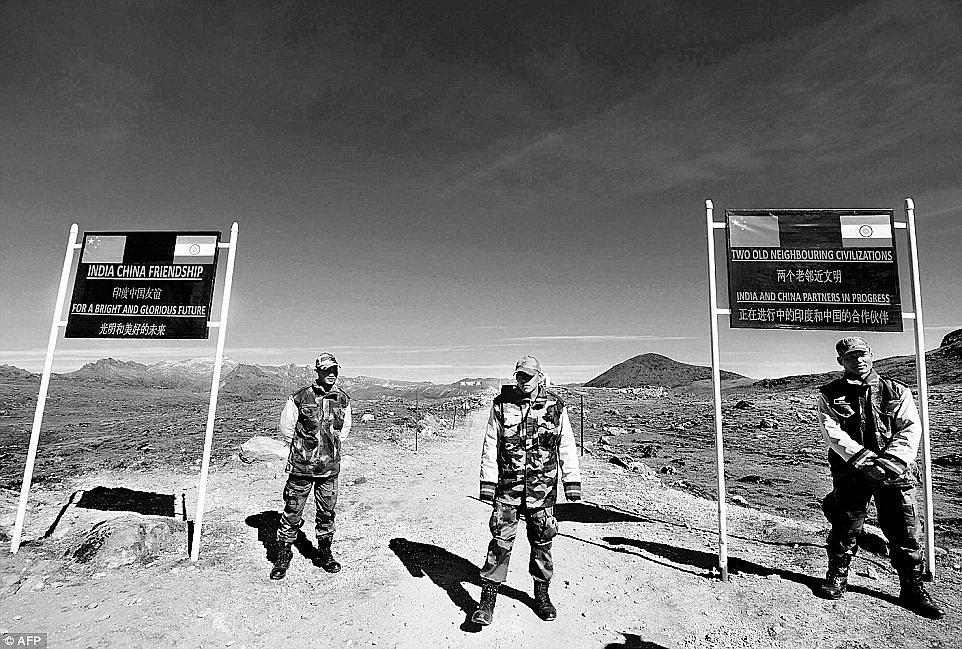World
The Name And Claim Games Of The ‘Middle Kingdom’
- Naming and claiming territories has become a favourite pastime for Beijing’s apparatchiks - and the game is played with an audacious assertiveness

Indian army soldiers stand guard at the Indo-China border in Arunachal Pradesh
In international politics nomenclature of geo-spatial zones is more than mere convenience, it is high strategy. Beijing is a dextrous player of this game, but its moves are immoderately assertive. This unnecessary assertiveness is once again evident from its act of giving new colloquial names for places in Arunachal Pradesh. Naming and claiming territories has become too favourite a past-time for Beijing’s apparatchiks.
Beijing plays this name-and-claim game not just on India’s frontiers but in East Asia too. In 2009, Beijing’s permanent mission to the United Nations very tactfully named the disputed archipelagos as Dongsha, Zhongsha, Xisha, and Nansha and not by their colonial names Pratas Islands, Macclesfield Bank and Scarborough Shoal, Paracel Islands, and Spratly Islands. This was under the guise of restoring ancient Middle Kingdom heritage and doing away with colonial era nomenclature. It is also important to note the existence of different names to the same islands in the literature of many South East Asian countries.
The Pearl River Delta, which is littoral to these islands, has risen to become the most economically prosperous mainland province in China. Although Shanghai continues to be the biggest trading entrepot, Beijing intends to transform the Pearl River Delta as one massive plug-in that would receive its energy, communications, and trade lines, including its Maritime Silk Route. Contrary to these grandiose plans, Beijing has not had a rosy past along this sea-board, as it has often proved to be its soft and vulnerable under-belly. Beijing in numerous anecdotes of the “Century of Humiliation”, cites the Sino-French and the Sino-Anglo Opium Wars as outcomes of its weak maritime defence. It therefore is leaving no islands (read ‘stones’) unturned in offensively defending the seaboard, which it is slowly turning into its own lagoon. The offensive defence is not limited to the islands, but it goes far beneath on the seafloor where it now plans to build a permanent underwater station for purposes yet undisclosed.
Beijing on one hand justifies its defence and reversal of colonial history, but it also knowingly and as a mark of its inherent and unjustified aggression is trampling upon the sovereignty and claims of its littoral nations. This assertion is symbolic of its Sino-centric Middle Kingdom cosmology, according to which it cannot become a superpower until it has penetrability into what it considers as the ‘barbarian’ oceans, to its east and south-east, and the ‘barbarian’ lands to the north, west, and south-west of China Proper.
The sea which China is offensively controlling as its own has a profound locus in the history of the entire South East Asia as well as India. In the Tagalot language, which shares many cognates with Sanskrit, Tamil and Malaya, the sea west of Philippines is called Dagat Luzon. Whereas, the natives of Vietnam call it as the Cham Sea (named after the Indic Campa culture). New names such as the South East Asia Sea are also being proposed in South East Asian countries. India has an ancient civilisational tether with this sea, and therefore it would be entirely in its right to support the existence of all these names.
India is not new to renaming of its towns and monuments by aggressors and it recognises Beijing’s ploy very well. Beijing must realise, the toponym Arunachal is derived from ‘Arun’ a name not limited to Modern India, it transcends into antiquity; it transcends into the sun-venerating Indic cultures of the entire East Asia, all very close to that vulnerable under-belly.
Introducing ElectionsHQ + 50 Ground Reports Project
The 2024 elections might seem easy to guess, but there are some important questions that shouldn't be missed.
Do freebies still sway voters? Do people prioritise infrastructure when voting? How will Punjab vote?
The answers to these questions provide great insights into where we, as a country, are headed in the years to come.
Swarajya is starting a project with an aim to do 50 solid ground stories and a smart commentary service on WhatsApp, a one-of-a-kind. We'd love your support during this election season.
Click below to contribute.
Latest